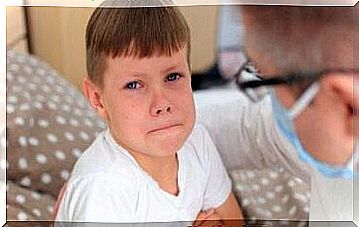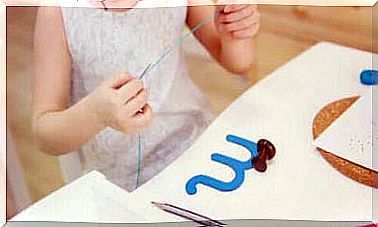What Is Hyperopia In Children? – Being Parents

The farsightedness in children is a defect of vision in which the near vision or close is blurred. Excessive strain on the eyes to compensate for this blurred vision can lead to eye strain and headaches. In the case of children, this can also imply difficulties in the development of school activities.
It is not a progressive defect, indeed it is rare that there is an increase of the difficulty as time passes, on the other hand it can become chronic. This implies that the use of glasses must be permanent.
Here are the warning signs that will help you identify hyperopia in children.
Signs of possible hyperopia in children
From about 4 years old, a problem of hyperopia can appear. Although eye exams are usually performed by the pediatrician, here are some symptoms that can help you tell if your child is having vision problems.
- He squinted to read or watch television. The act of blinking is a sign of visual accommodation. He tries to squint to stop the blurry vision and compensate for the sight.
- Your child tells you that his sight is tiring. The effort of compensation generates visual fatigue which is often accompanied by reddening of the eyes or excessive tearing.
- Headaches. When the visual effort time is long, it can produce mild headaches.
- He has trouble stabilizing attention. In school, it is common to experience attention difficulties due to sight problems. Not seeing well means not being able to follow the flow of the class.
- Strabismus. In some cases, one or both eyes may deviate in order to compensate for this faulty vision.

What to do to correct hyperopia in children?
If you suspect your child has this visual defect, it is best to see a pediatrician. They will order eye exams for your child so that you can confirm the diagnosis.
Hyperopia in children can be corrected. The techniques that correct it are:
- The use of glasses. Depending on the age and the level of hyperopic defect, we will look for the glasses that best correct the visual error.
- Laser operation. This is the most commonly used method. The goal is to correct the defect with a small laser, the surgery requires a slight removal of the cornea, which will take shape later.
- Surface techniques. A laser is used to correct the curvature of the cornea, which prevents correct vision. Then a protective contact lens will be placed and the sight will gradually return.
- Placement of intraocular lenses. It is an intraocular glass implanted between the iris and the lens. It is unique for each eye.
The choice of one method or another will depend on the ophthalmologist, who will determine the best solution, taking into account the specific characteristics of your child’s hyperopia.
Vision is the touch of the mind
-Fernando Pessoa-
The operation for hyperopia in children?
In principle, the goal of the retraction or correction of the vision defect is to prevent your child from having to wear glasses for the rest of his life. It is true that hyperopia can be corrected over time, but if it does not, you may want to consider surgery.
It is a simple operation that lasts between 10 and 20 minutes, and does not require a complicated postoperative period. It does not require general anesthesia and your child will not be at increased risk.
To make this decision, the ophthalmologist must monitor the process. In order to be able to operate, hyperopia must remain stable and not worsen, because an intervention would not make sense.

A curiosity
We are all born farsighted. Our visual system takes a long time to develop definitively, so we are born with rather poor vision.
Normally, this defect corrects itself over time, also due to full and continuous exposure to different visual stimuli. If this is not corrected properly, vision problems like hyperopia can develop in children.









